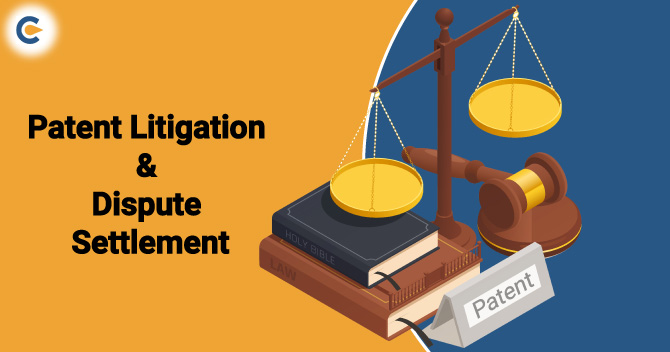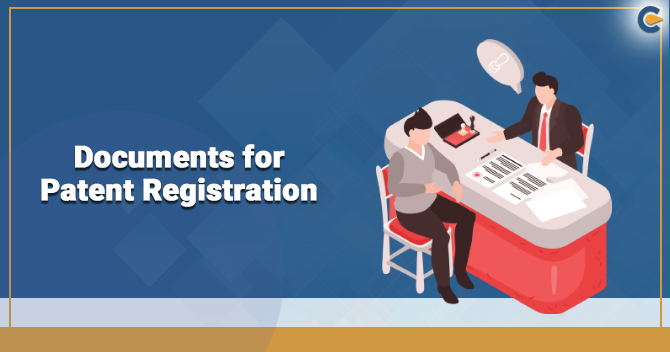Intellectual Property Rights is one of the most important properties of almost all the domain internationally. New technologies in various fields have increased in the number of patent applications filed in India. However, exploitation, protection, and enforcement of patent rights at the international level are crucial for all the innovators.
Therefore, patent litigation requires court proceedings in every jurisdiction where the registered patent is allegedly infringed. If the particular product has a worldwide market, then the patent litigation has a substantial legal and financial impact.
Patent Litigation as an Emerging Trend in India
In recent trends, patent cases are rising in pharmaceutical patent and SEP cases shaping up its IPR regime. The Court procedures and laws related to patents are also evolving day by day with an increasing number of patent cases resulting in simpler and stricter procedural laws that have reduced the time taken to decide the case.
The aggrieved parties are also encouraged to arrive at a patent dispute settlement, reducing the courts’ burden. However, there is still a need to disperse patent awareness and patent litigation in other parts of the country. However, the volume of patent litigation in India has seen a spike after 2007. In recent judgments, especially those rendered after trial, have established India as a strong enforcer of intellectual property regimes.
Prominent cases of Patent Litigation
In “F.Hoffmann-la Roche Ltd v Cipla Ltd, ” Citing the case involved two pharmaceutical giants; Hon’ble Delhi High Court found Cipla, an Indian generic manufacturer infringing the Swiss drug major Hoffmann-La Roche’s patented drug Erlotinib Hydrochloride. Same as, in Merck Sharp & Dome v. Glenmark Pharmaceuticals Ltd., Hon’ble Delhi High Court barred Glenmark Pharmaceuticals Ltd., the Mumbai based company, from selling its anti-diabetes drug based on Merck’s patented drug Sitagliptin.
Patent Dispute Settlement
In patent cases, the patent dispute settlement is mostly pivoted on an outcome of the request for an interim injunction made by a patentee. It has given rise to high pitched battles between parties at the beginning of the case itself on a temporary injunction. In most of the matters, the courts have been liberal in granting interim injunctions in the first hearing itself, even granting ex-parte injunctions before summoning the respective defendants. It has put the patent holders at an advantage to bring an early end to the case by way of settlement.
With the discussion on “Ericsson and Vringo cases,” one cannot miss the advent of patent cases arising out of ‘Standard Essential Patents.’ Where a patent in a technical field becomes necessary to meet the standard of such technology, it is termed a Standard Essential Patents (SEP). The benefits of SEPs are provided to manufacturers utilizing such standards by way of a license agreement between the SEP holder and the manufacturer. The manufacturers’ protection from the unfair and inconsistent license terms, standard-setting bodies make it mandatory for a SEP holder to provide license at are fair, reasonable, and non-discriminatory.
Patents Act of 1970 and Dispute Settlement Forum
India has already a highly developed judicial system with the Supreme Court having plenary powers (Article 142) to make an order for doing complete justice in any cause or matter and have a binding effect (Article 144), to all authorities, Civil and Judicial, in the territory of India to act in aid of Supreme Court. The Indian Patent Act 1970[1] provides for its own administrative and judicial setup. The Head office of the patent is headed by the Controller of Patents appointed by the central government. The central government is empowered to appoint other officers who will be subordinate to the controller and function under supervision.
Patents’ Controller has been vested with a civil court’s power under some proceedings before him while trying a suit under CPC 1908. The Act empowers the controller in certain matters such as summoning and compels attendance, discovery, and production of documents, receiving evidence of affidavits, issuing commissions for taking evidence and awarding costs, etc., to act in accordance to Civil Procedure Code 1908.
Under so many proceedings before the controller as applications, oppositions, revocations, amendments of applications, specifications, and so many other liabilities, the controller can proceed with the matter of applying natural justice norms. The Controller General of the patents can order the opportunity to be heard, compelling presence of any person or documents.
Who Can Be Part of Patent Litigation?


Patentee
If there is any infringement of his rights, the first right to file a suit for infringement lies with the patentee as the right holder. Once granted in favor of a patentee, the patent gives him certain rights to use, sell, and produce overall commercial exploitation for a specific period. Any act by any other person without the authorization, if it amounts to infringement, renders the patentee competent to file suit for infringement.
Exclusive licensee
The exclusive licensee is deemed at par with patentee for filing suits for infringement. After the date of the grant of a license, the exclusive licensee can file an infringement suit for any infringement committed after the grant of license. The patentee can also be joined as the plaintiff and not joined to be made, the defendant. There it can be said that Act empowers the exclusive licensee to file suits for infringement, and if the patent right holder does not take any interest in the filing of a suit, he can be made pro forma defendant.
Licensee
Section 110 of the Patents Act of 1970 also entitles the licensee to file suits for Patent infringement. The licensee will have to call upon the patentee to take proceedings to prevent any infringement of the patent. Suppose the patentee refuses or neglects to do so within two months after being so called upon. In that case, the licensee may institute proceedings for infringement in his name as though he was himself patentee, and patentee could be made pro forma defendant.
WIPO Arbitration and Mediation Centre
In order to provide services for a resolution of commercial disputes through mediation and arbitration between the parties involving intellectual property. The WIPO Arbitration and Mediation Center was established in 1994 in Geneva, Switzerland. The arbitration procedures offered by the Center are widely recognized as particularly appropriate for entertainment, technology, and other disputes involving intellectual property.
- WIPO arbitration begins with the claimant submitting a request for arbitration to the WIPO Arbitration and Mediation Center. The request for arbitration must contain the summary details concerning the dispute.
- Within 30 days from the receipt of the request for arbitration, the respondent has to file an answer to the request.
- The parties will choose the number of arbitrators which will sit on the tribunal. In the absence of any agreement by the parties, the WIPO Center will appoint the sole arbitrator, except where the WIPO Center determines that 3 arbitrators are appropriate.
- The statement of claim has to be filed within 30 days from the constitution of the tribunal.
- The statement of defence has to be filed within 30 days of the receipt of the statement of claim.
- The tribunal may schedule further submissions.
- By party request or tribunal discretion, a hearing may be held for the presentation of evidence by witnesses and experts and oral argument.
- After the tribunal is satisfied that the parties have had adequate opportunity to present submission and evidence, it will declare the proceedings closed.
- The final award by the tribunal must be delivered within 3 months from the closure of the proceedings.
Read our article:Cancellation of Design Registration in India
Advantages of Arbitration in Patent disputes
Patent rights are territorial rights by its nature, associated with the specific jurisdiction in which the protection is sorted. Hence, various jurisdictions’ patent litigation procedures cannot be merged and are subjected to the one country law where the invention is protected. The different jurisdictions’ legal system differs in the procedure, method of handling similar issues, time-lines, and decision-makers with varying degrees of experience and technical expertise. The patent dispute resolution is an alternative to the courts, and arbitration is one the most extremely used internationally because of its distinct advantages.


Single Procedure
Patent disputes are often involved with parties from different countries. So, court litigation usually results from inconsistency due to the differences in legal procedures in different countries. An arbitration helps the parties to solve the patent disputes in a single procedure and less expensive. It helps to avoid complications and inconsistency in the litigation proceedings in several jurisdictions.
Resolution with Neutrality
In arbitration, parties will be able to opt for the law, language, procedures, rules, and customs that are neutral and negotiable. The arbitration can happen anywhere, in any language, and with the arbitrators belongs to any nationality.
Confidentiality
The resolution of any disputes through arbitration hearings can be kept confidential.
Faster and Economical
The arbitration procedure is speedy and less expensive than litigation proceedings in the courts.
Final Enforceability of the Decision
Unlike the court’s judgment, which can usually be appealed or contested in a higher court, arbitration results are final, and resolution comes into force immediately.
Freedom to choose a Competent Decision-Maker
One of the arbitration’s most important features is that the parties will be able to select their arbitral committee. It is to make sure that their dispute is heard by the committee that they trust, considered to be independent, experienced, and neutral in the relevant subject-matter. A higher level of technical competence is required. The arbitral committee allows parties to select an arbitrator of their choice, preferably the one who has an inherent understanding of the case in disputes.
Disadvantages of Arbitration over Patent Disputes
Even though arbitration is the better way to resolve the patent dispute, it also has its limitations. For instance, certain disputes can only be resolved by court litigation. Sometimes, it is impossible to resolve the dispute that would set a public legal criterion through arbitration. The arbitration procedure, an arbitral award or a settlement agreement, are mainly binding on only the parties involved. Suppose a party wants to obtain a generally binding decision that the claims of a particular patent were valid or invalid. In that case, the only means of obtaining such a decision will be through a court judgment. Additionally, arbitration’s harmonious nature makes it less appropriate if one of the two parties is not cooperating. If both parties must agree to use arbitration, no party can force another to participate.


Unable to settle the subject matter
Sometimes by arbitration, the issues of a patent dispute cannot be able to settle under the law of a particular state. For instance, in a patent dispute over an infringement, an arbitral committee will not determine whether a patent is being infringed or not. Besides, an arbitrator/ committee may not have the power to grant injunctions where a court has the right to grant.
Lack of access to Precedents
Since arbitration resolutions are private, the precedents on earlier arbitration resolutions may not be accessible and may not deter other infringers.
Conclusion
Arbitration offers a self-help route to resolve disputes outside the court, where the parties have greater control over the proceedings. Arbitration is a better way of resolving patent disputes than patent litigation because it is a more efficient, less expensive, and less procedural way of resolving disputes. But sometimes, it may not essentially be the case as arbitral proceedings become more complex. Parties would like to maintain a good relationship and want to have their dispute out of public knowledge would also prefer the arbitration route.
Read our article:Detailed Process of Patent Registration in India











